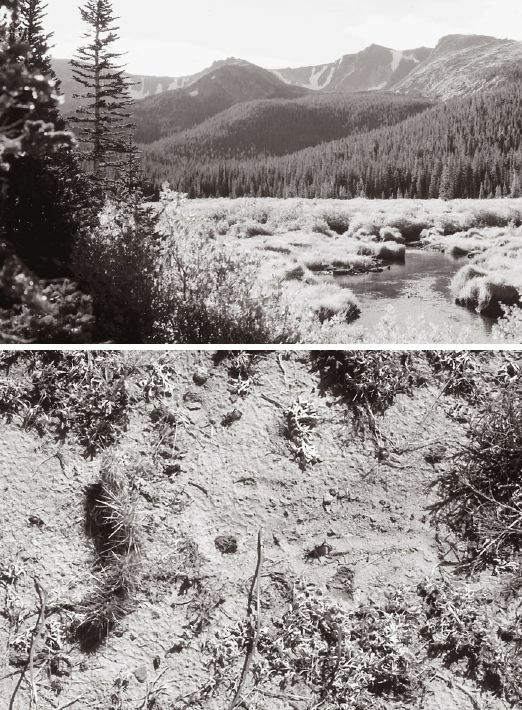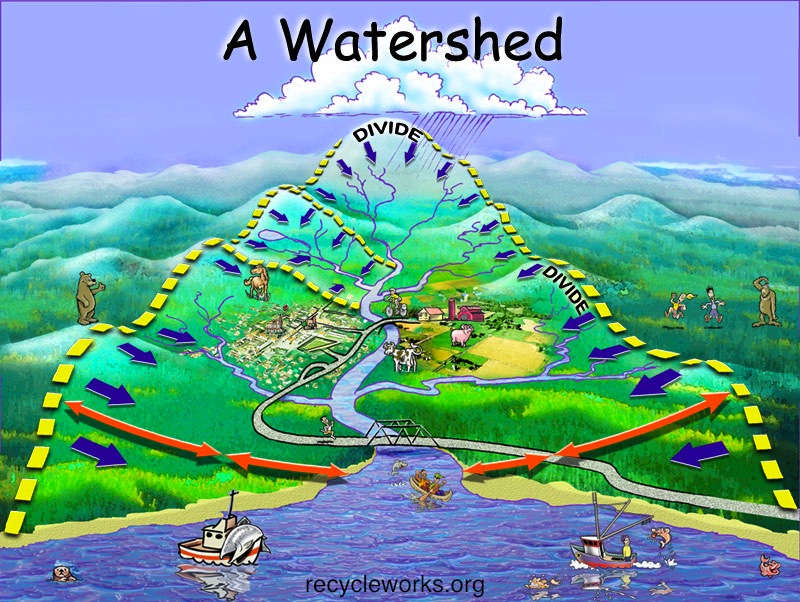(2) Ecological Definitions of Landscape
In landscape ecology, three main kinds of landscape
definitions are found: (i) landscape as a broad geographic
area; (ii) landscape as a spatially heterogeneous area of any
size, ranging from local to broad scales (i.e., landscape as
an ecological criterion); and (iii) landscape as a spatial
complex of human-nature interactions.


Table:
Definitions
of landscape ecology (from Wu
and Hobbs 2007).
Source
|
Definition |
|
Troll,
C., 1939, 1968, 1971 |
The German geographer Carl
Troll coined the term "landscape ecology" in 1939, and
defined it in 1968 as "the
study of the main complex causal relationships
between the life communities and their environment
in a given section of a landscape. These relationships are
expressed regionally in a definite distribution pattern (landscape mosaic, landscape
pattern) and in a natural
regionalization
at various orders of magnitude" (Troll 1968;
cited in Troll 1971). |
|
Zonneveld, I. S. 1972 |
"Landscape ecology is an
aspect of geographical
study which considers the landscape as a holistic entity, made up
of different elements, all influencing each other. This means that land is
studied as the "total
character of a region", and not in terms of
the separate aspects of its component elements"
(Zonneveld 1972). |
|
Naveh,
Z., and A. S. Lieberman. 1984, 1994 |
"Landscape ecology is a
young branch of modern ecology that deals with the interrelationship between man
and his open and built-up landscapes" based
on general systems theory,
biocybernetics, and ecosystemology (Naveh and
Liberman 1984). "Landscapes
can be recognized as tangible
and heterogeneous but closely interwoven natural and cultural
entities of our total living space," and landscape ecology is "a
holistic and transdisciplinary science of landscape
study, appraisal, history, planning and management,
conservation, and restoration" (Naveh and
Liberman 1994). |
|
Forman,
R.
T. T. 1981; Forman, R. T. T., and M. Godron. 1986 |
"A landscape is a kilometers-wide area
where a cluster of interacting stands or ecosystems is
repeated in similar form; landscape
ecology, thus, studies the structure, function and
development of landscapes" (Forman 1981). Landscape structure refers
to "the spatial relationships among the distinctive
ecosystems;" landscape function refers to "the flows
of energy, materials, and species among the component
ecosystems;" and landscape change refers to "the
alteration in the structure and function of the
ecological mosaic over time" (Forman and Godron 1986). |
|
Risser,
P. G., J. R. Karr, and R. T. T. Forman. 1984 |
"Landscape ecology focuses
explicitly upon spatial
pattern. Specifically,
landscape ecology considers the development and dynamics of spatial
heterogeneity, spatial and temporal interactions and
exchanges across heterogeneous landscapes,
influences of spatial heterogeneity on biotic and
abiotic processes, and management of spatial
heterogeneity" (Risser et al. 1984). "Landscape ecology is not a distinct discipline or
simply a branch of ecology, but rather is the
synthetic intersection
of many related disciplines that focus on the
spatial-temporal pattern of the landscape" (Risser et
al. 1984). |
|
Turner,
M. G., R.
H. Gardner, and R.
V. O'Neill. 2001 |
"Landscape ecology emphasizes the interaction
between spatial pattern and ecological process, that
is, the causes and consequences of spatial
heterogeneity across a range of scales"
(Turner et al. 2001). "Two
important
aspects of landscape ecology ... distinguish it from
other subdisciplines within ecology": "First,
landscape ecology explicitly addresses the importance
of spatial configuration for ecological processes" and
"second, landscape ecology often focuses on spatial
extents that are much larger than those traditionally
studied in ecology, often, the landscape as seen by a
human observer" (Turner et al. 2001). |
|
Wu, J., and R.
Hobbs. 2007 |
"Landscape ecology is the science and art of
studying and influencing the relationship between
spatial pattern and ecological processes across
hierarchical levels of biological organization and
different scales in space and time" (Wu
and Hobbs 2007). |
A Hierarchical and
Pluralistic Framework for Landscape Ecology - The
Landscape Ecology Pyramid (Wu 2006):
Two Dominant Schools
of Thought in Landscape Ecology (Wu
2006)
1981: The first international conference on landscape ecology, organized by the Netherlands Society of Landscape Ecology in Veldhoven (Tjallingii and de Veer 1982 - PDF); Golley, Fabos, Forman, Carlson & DM Sharpe attended.
1982: International Association for Landscape Ecology (IALE) was established in Piestany, Czechoslovakia (CSSR); Forman was elected a Vice President, Golley the USA Representative for IALE.
1983: The Allerton Park Workshop on Landscape Ecology, organized by Risser, Karr and Forman (supported by NSF; Gary Barrett as Ecology Program Director); 25 participants (Risser et al. 1984)
1984: Landscape Ecology: Theory and Application, by Naveh and Lieberman.
1984: 1st Contributed Papers session on Landscape Ecology and Biogeography at the ESA meeting
1987: The journal, Landscape Ecology, was established with the support of both IALE and INTECOL; F.B. Golley as the Editor-in-Chief
1986 - US-IALE (changed to IALE-NA in 2020):
- 1987: 2nd US-IALE meeting at Univ of Virginia, hosted by Shugart & WE Odum; 200 participants.
- 1988: 3rd US-IALE meeting at Univ of NM, hosted by BT Milne; 250 participants; Pres - G. Barrett.
- 1989: 4th US-IALE meeting at Colorado State University, hosted by I. C. Burke; 250 participants
- 1990: 5th US-IALE meeting at Miami Univ, Oxford, hosted by John. L. Vankat; ~200 participants
- .....
- 2007: Tucson, Arizona, April 9-13, 2007
- .....
- 2010: University of Georgia, Athens, April 5-9, 2010
- 2011: US-IALE Annual Symposium, Portland, April 3-7, 2011
- .....
-
2020: US-IALE was changed to IALE-North America!
- .....
- More at https://www.ialena.org